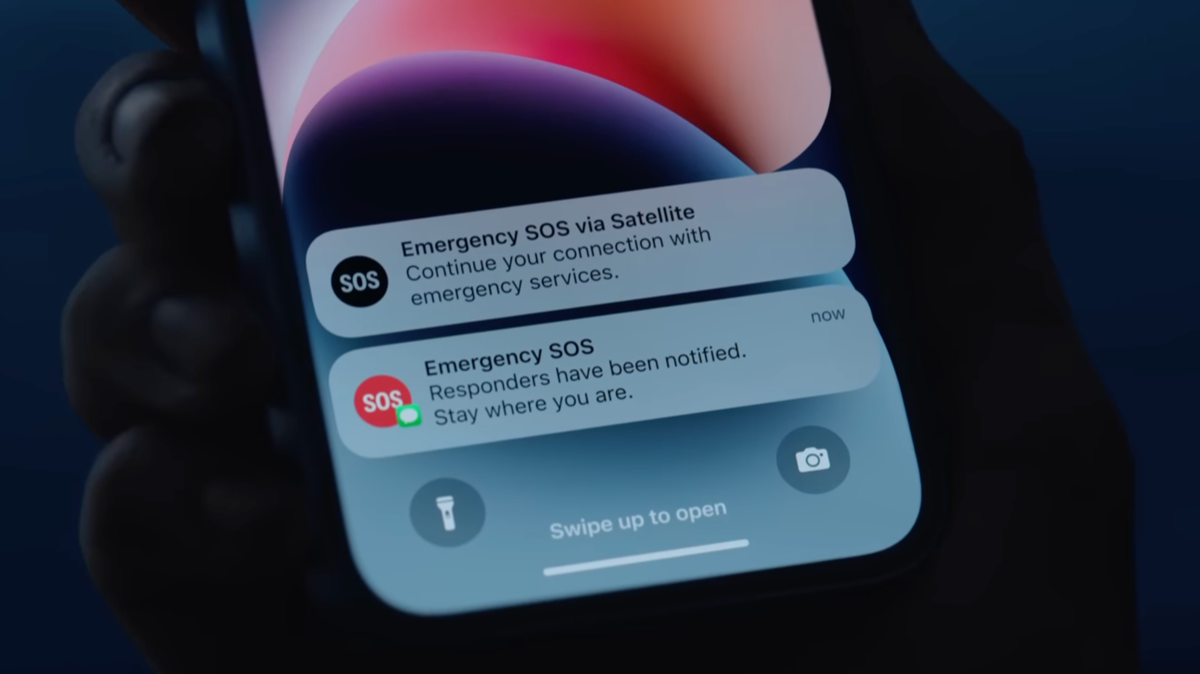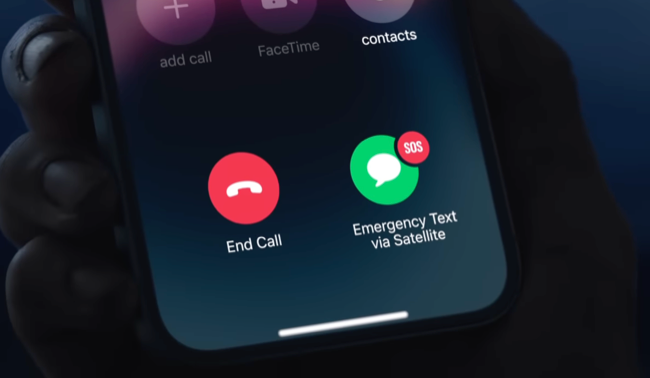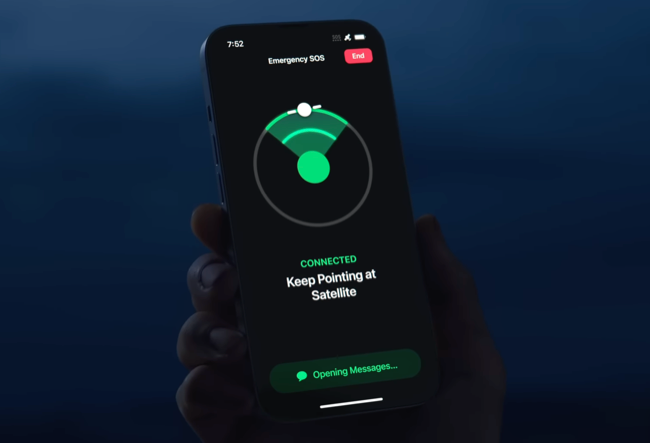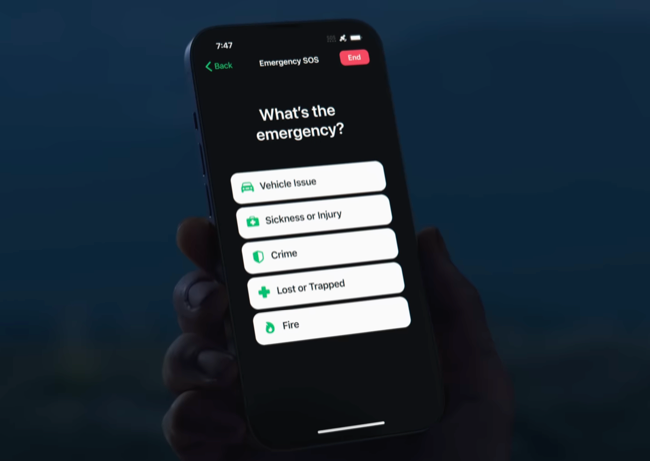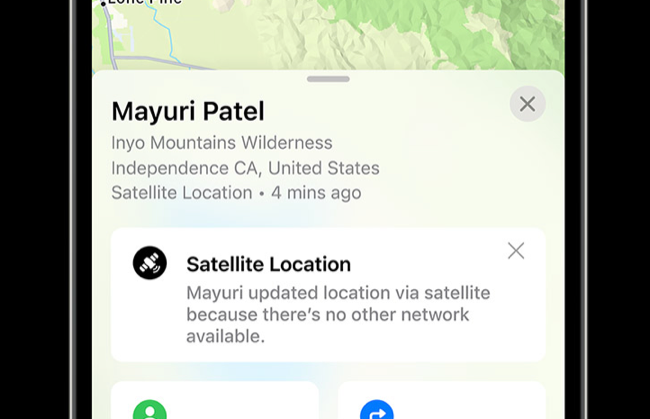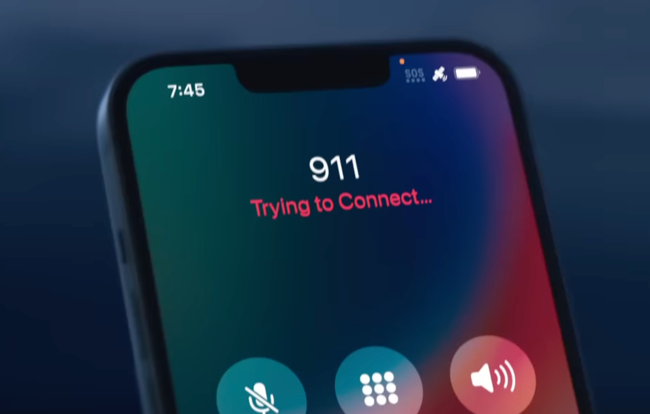Quick Links
The iPhone 14 and iPhone 14 Pro make use of some smart new safety features, including the ability to use satellite communication to connect with emergency services and your friends. Here's what we know.
Overcoming the Problem With Satellites
Satellites are fast-moving objects in the sky, unlike cell towers which remain in the same position (relatively speaking). Satellite communication on a portable scale doesn't have a lot of bandwidth available. While satellite internet services exist, they require chunky antennas and a lot of power draw.
If you've ever made or received a call using a satellite phone, you'll probably aware of this issue. Dropouts are common and audio quality is generally poor on account of the lack of bandwidth. Communication must be heavily compressed to the point of sometimes being inaudible.
Apple sought to solve both of these problems with the iPhone 14 and iPhone 14 Pro "Emergency SOS via Satellite" feature. The company has stated that you must be outdoors to use the service, with a clear view of the sky. To make the process easier, your iPhone will show you which direction you'll need to point it in to acquire and maintain a connection.
To overcome bandwidth limitations, Emergency SOS via Satellite is limited to text messaging. Apple developed a text compression algorithm to shrink text messages by three times compared to uncompressed data. A single text message can be delivered in less than 15 seconds under optimal conditions, but could take more than a minute under "light foliage."
As a result of a text-only approach, Apple had to overcome another problem. Not all emergency receivers accept text messages; some are voice-only. To solve this problem, Apple designed infrastructure to route messages through "emergency relay centers with Apple-trained specialists who call for help on your behalf" which sounds like a manned version of Emergency SOS via Siri on the Apple Watch.
For Emergency Services and Friends
Before you connect to an emergency operator, your iPhone will ask you a few questions to ascertain what situation you're in. Once you've connected to an emergency responder, your answers to those questions in addition to your location, Medical ID, and current battery level.
The idea is to transmit as much information as necessary to help emergency services locate you and render assistance. You'll need to keep your iPhone pointed at a satellite to maintain a connection, and a notification should appear on-screen that lets you resume your conversation with operators if need be.
It's not clear yet how power-intensive satellite communication is, but it's likely to drain your battery much faster than making a call over the cellular network if GPS performance is anything to go by. Your iPhone uses GPS to get a location fix via satellite and has traditionally been a major source of battery drain.
Apple's satellite solution isn't only for communicating directly with emergency services but can also be used alongside the Find My service to let friends and family know where you are. Find My is Apple's geolocation app designed for finding people, devices, and objects attached to AirTags.
Apple has been tight-lipped about this part of the service at this early stage, but it will presumably only work with other users of the Find My service (which means you'll need an Apple ID for it to work). An early screenshot includes phrasing that suggests the service must be updated manually rather than working in the background, but we'll have to wait for the full release to find out for sure.
How Much Will SOS via Satellite Cost?
Perhaps the most perplexing part of the iPhone 14 and iPhone 14 Pro satellite functionality is the lingering question of ongoing cost. Apple stated during the iPhone 14 event that the service would be "free for two years" with compatible devices, but didn't say anything more about what users would be expected to pay thereafter.
Satellite phone plans normally start at around $50 per month for voice plans that include talk time and text messages, with global coverage. Since Apple's service is text-only, it should undercut services like these. Apple has stated that "Apple trained specialists" will be used to make the service function though, so it's clear that there's more overhead here than simple infrastructure costs.
Apple could roll the service into iCloud+, as it has done with its Private Relay and Hide My Email services. That seems unlikely though on account of having to employ and train specialists. It seems more reasonable to expect the service to require a monthly or yearly fee, but it's anyone's guess as to how much that will cost.
While satellite phone services have global coverage, that isn't something Apple is offering at this stage. Apple may want to focus on rolling out the service to more regions before the two years are up so that it's a more enticing product come time to renew.
Having a service that is pre-paid by the month could work for those who don't require satellite communication all of the time. If you spend a few months in the summer hiking and a few months skiing in the winter, you could pay for the months you're most likely to need satellite SOS (and Find My location) services, rather than shelling out all year long.
When Will It Launch?
While the iPhone 14 and iPhone 14 Pro will release in September 2022, satellite services won't arrive until November. It will be limited to the US and Canada first, as is often the case with so many of Apple's flagship features.
Even though all new models are getting satellite functionality, you might want to think twice before you sell out for an iPhone 14 this year. Don't forget that your old iPhone is likely compatible with iOS 16, which arrives on September 12.

